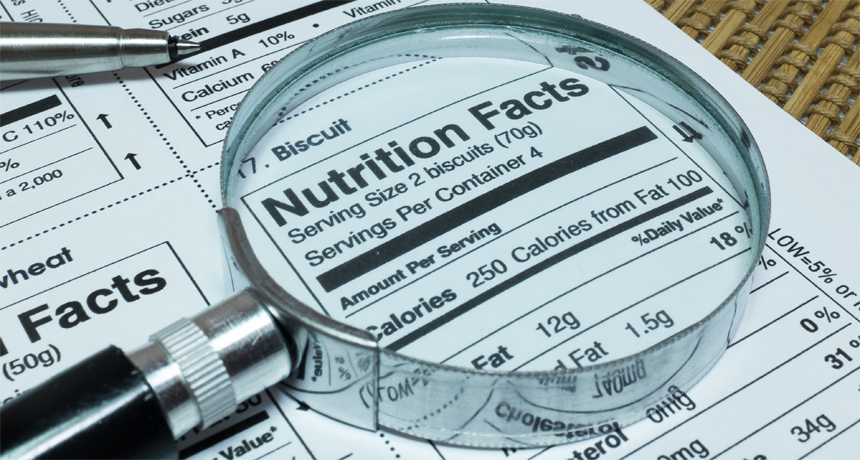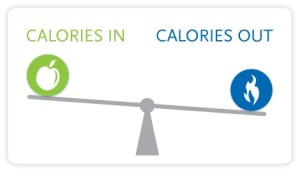Decoding Weight Loss: How Calories and Metabolism Work Together

Introduction: The Science Behind Your Weight Loss Journey
Struggling to shed those stubborn pounds? You’re in good company—weight loss tops the goal list for millions, yet the road to success can feel like a maze. Everyone’s tossing around buzzwords like “calories” and “metabolism,” but what do they actually mean for your journey? Spoiler: They’re the twin engines driving every ounce you lose—or gain. Understanding how they work together isn’t just nerdy trivia—it’s your ticket to cracking the weight loss code. In this guide, we’re decoding “calories and metabolism explained” to show you how these forces shape your results.
Ever wondered why some folks drop weight effortlessly while you’re stuck staring at the scale? It’s not magic—it’s science. Calories are the energy you eat; metabolism is how fast your body burns it. Get them in sync, and you’re golden. We’ll answer burning questions like “how to boost metabolism for weight loss” and reveal how to tweak both for maximum impact. With science-backed insights—like why muscle matters more than you think—and practical tips you can start today, this isn’t about quick fixes. It’s about taking control of your body’s natural systems for results that stick. Whether you’re a newbie or a fitness buff, we’ve got you covered. Ready to ditch the confusion and master sustainable weight loss? Let’s dive into the science and get you moving toward your goals!
Understanding the Basics: Calories and Metabolism
When it comes to weight loss, two players steal the spotlight: calories and metabolism. They’re the dynamic duo behind every pound shed or gained, yet they’re often misunderstood. Whether you’re sipping a smoothie or sprinting up stairs, these fundamentals dictate how your body transforms food into energy—and how you can tilt the scales in your favor. Let’s break it down step by step so you can master the basics and kickstart your weight loss journey.
What Are Calories?
Calories are more than just numbers on a nutrition label—they’re units of energy that fuel everything you do. From blinking to bench presses, every move you make relies on the energy calories provide. Think of them as your body’s currency: you spend them to live, and you earn them through what you eat. But not all calories are created equal, and understanding their types can unlock smarter eating habits.
- Simple Calories: These are the quick-hit energy sources found in fruits, honey, or that sneaky spoonful of sugar in your coffee. They digest fast, giving you an instant boost—perfect for a pre-workout snack but not so great if you’re aiming to stay full.
- Complex Calories: Picture whole grains, legumes, or fibrous veggies like broccoli. These slow-burning champs release energy gradually, keeping hunger at bay and powering you through your day without the crash.
Here’s the catch: calories are a balancing act. Consume more than your body needs, and the excess gets stashed as fat—a surplus that builds over time. Skimp below your needs, and your body taps into those fat reserves for fuel—a deficit that’s the golden ticket to weight loss. It’s simple math with a big payoff.

What Is Metabolism?
Now, meet metabolism: your body’s internal engine. It’s a collection of chemical reactions that convert food into usable energy, running 24/7 to keep you breathing, thinking, and moving. Your metabolic rate—the speed at which you burn calories—varies based on factors you can and can’t control.
- Genes: Some lucky folks inherit a naturally fast metabolism, torching calories even while Netflix-binging. Others might need a little extra push.
- Age & Gender: Men typically burn more, thanks to higher muscle mass, while metabolism tends to slow as we age—sorry, 30-somethings!
- Muscle Mass: Here’s the game-changer: More muscle means more calories burned, even at rest. That’s why strength training is a weight loss secret weapon.
Calories vs. Metabolism: How They Team Up
Calories and metabolism are partners in crime—or in weight loss, depending on your goals. Picture calories as the fuel and metabolism as the furnace. If you eat 2,000 calories a day but your metabolism burns 2,200, you’re in a 200-calorie deficit—prime fat-burning territory. Flip it to 2,500 calories eaten and 2,200 burned, and that 300-calorie surplus heads straight to your fat stores.
It’s a delicate dance between intake and output. Master this interplay, and you’ve cracked the code to weight loss. Want to dig deeper? Stick around—next, we’ll explore how to tweak this duo for real results.
The Caloric Equation: Your Weight Loss Blueprint
Weight loss doesn’t have to feel like rocket science—it’s more like basic math with a twist. At its core, the “calories in, calories out” (CICO) principle is your blueprint for shedding pounds. Whether you’re aiming to drop a few pounds or transform your entire physique, understanding this equation is step one. But here’s the kicker: while the numbers matter, there’s more to the story. Let’s unpack how CICO works, why it’s not always black-and-white, and how real people turn it into results.
Calories In vs. Calories Out Explained
The CICO concept is beautifully simple: it’s all about the balance between what you eat and what you burn. Here’s how it shakes out:
- Surplus = Weight Gain: Take in more calories than your body uses, and the extras get tucked away as fat. That late-night pizza splurge? It’s not just a treat—it’s a deposit.
- Deficit = Weight Loss: Burn more than you eat, and your body dips into its fat reserves for fuel. That’s the sweet spot for slimming down.
- Balance = Maintenance: Match your intake to your burn, and your weight holds steady—perfect for when you’ve hit your goal.
The magic number? A 500-calorie daily deficit. For example, eat 1,500 calories while burning 2,000, and you could lose about one pound of fat per week. That’s not guesswork—it’s backed by science, like a 2018 study from the American Journal of Clinical Nutrition showing consistent fat loss with this approach. Since one pound of fat equals roughly 3,500 calories, a week of 500-calorie deficits adds up fast.

Is It Really That Simple?
Yes—but there’s a catch. CICO is the foundation, but it’s not the whole house. Food quality, hormones, and your unique metabolism can tweak the outcome. Imagine cutting 500 calories from leafy greens and lean protein versus 500 from donuts and soda. The veggie route fuels you with nutrients, keeps hunger in check, and sustains energy. The donut path? You’re crashing by noon and craving more. Hormones like insulin or cortisol can also nudge your fat storage, while a sluggish metabolism might mean you burn less than expected. So, while CICO works, how you hit those numbers matters just as much.
Actionable Tip
Ready to make CICO your own? Download a free app like MyFitnessPal to track your calories in and out. Plug in your meals, log your activity, and find your deficit sweet spot. It’s like having a weight loss GPS—simple, effective, and tailored to you. Start today, and you’re one step closer to decoding your own success.
Metabolism’s Role in Weight Loss
If calories are the fuel for weight loss, metabolism is the engine that burns them. It’s the unsung hero—or sometimes the scapegoat—in your journey to drop pounds. Ever wondered why your friend can eat burgers and stay slim while you gain from a salad? Metabolism might hold the answer. It’s not just a buzzword; it’s a key player in how your body processes energy. Let’s dive into why it matters, debunk some myths, and uncover practical ways to make it work for you.
Why Metabolism Matters
Your metabolic rate is like your body’s calorie-burning thermostat—it sets the baseline for how many calories you torch without even trying. Picture this: a fast metabolism might burn 2,000 calories a day while you’re just chilling, sleeping, or scrolling X. A slower one? Maybe only 1,500. That 500-calorie gap can make weight loss feel like a breeze or a battle. It’s your starting line in the calories-in, calories-out game. The higher your baseline, the more wiggle room you have to eat without gaining—or the faster you shed fat in a deficit. Understanding your metabolism isn’t just nerdy science—it’s your weight loss edge.
Slow Metabolism: Myth or Reality?
“Ugh, I’ve got a slow metabolism” is the go-to excuse for stalled progress—but is it legit? Yes, it’s real, and factors like age, low muscle mass, or extreme crash dieting can drag it down. As you get older, your engine naturally slows (thanks, biology). Skimp on muscle, and you’re burning less at rest. Starve yourself on 800-calorie diets, and your body slams the brakes to conserve energy. But here’s the good news: a 2021 study in Metabolism showed that even with a sluggish rate, weight loss is still possible. It’s not a dealbreaker—just a signal to tweak your approach. Slow doesn’t mean stopped; it means strategic.

Can You Boost Metabolism for Weight Loss?
Here’s where it gets exciting: you can rev up your metabolism, even if it’s not a dramatic overhaul. No, there’s no magic pill to double your burn overnight (sorry, infomercial fans), but small, consistent habits add up. Check out these science-backed tricks:
- Strength Training: Muscle is your metabolic MVP. It burns 6-8 calories per pound daily at rest, compared to fat’s measly 2-3 per a 2020 Journal of Strength & Conditioning Research study. More muscle, more burn—simple as that.
- Protein: Eating protein spikes your metabolism by 20-30% during digestion (called the thermic effect). Swap that bagel for eggs, and you’re already ahead.
- Hydration: Chugging cold water gives a tiny, temporary boost—think of it as a freebie calorie burn.
The limit? You won’t turn into a calorie-incinerating furnace overnight. Consistency, not miracles, is the name of the game.
Actionable Tip
Want to kickstart your metabolism today? Add 2-3 strength training sessions to your week. Think squats, push-ups, or dumbbell rows—moves that build muscle and crank up your resting burn. Pair it with a protein-rich snack post-workout, and you’re priming your engine for weight loss success. Start small, stay steady, and watch the magic happen
Diet and Exercise: The Power Duo
Weight loss isn’t a solo act—it’s a tag-team effort between diet and exercise. Think of them as the ultimate power duo: diet controls the calories and tunes your metabolism while exercise torches extras and amps up your burn. Alone, they’re strong; together, they’re unstoppable. Whether you’re eyeing a slimmer waist or more energy to chase your goals, blending these two is the key to cracking the weight loss code. Let’s explore how they work in harmony and how you can harness their magic.
How Diet Shapes Calories and Metabolism
What you eat doesn’t just fill your stomach—it shapes how your body burns calories. Food isn’t just fuel; it’s a lever for your metabolism. Here’s how:
- Food Type: High-fiber champs like oats, broccoli, or apples take more energy to digest than processed junk like chips or cookies. That extra effort—called the thermic effect—means you’re burning more just by choosing wisely.
- Nutrient-Dense Picks: Lean meats, eggs, and leafy greens don’t just pack protein and vitamins—they keep hunger at bay and stoke your metabolic fire. Compare that to a sugary soda that spikes and crashes your energy.
- Timing: Eating breakfast (think oatmeal, not a donut) jump-starts your metabolic rate after a night’s fast. Small, balanced meals every 3-4 hours—like a handful of nuts or a turkey wrap—keep it humming all day.
Sample Meal Plan: Try this 1,200-calorie day: Breakfast is Greek yogurt with berries (300 calories), lunch is a grilled chicken salad with olive oil dressing (400 calories), and dinner is salmon with quinoa and steamed veggies (500 calories). It’s filling, metabolism-friendly, and delicious.
Exercise: The Calorie Torcher
If diet sets the stage, exercise lights it up. It’s your calorie-burning booster—and then some.
- Cardio: A brisk run or bike ride can burn 200-400 calories per hour, depending on intensity. It’s instant gratification for your deficit.
- Strength: Lifting weights builds muscle, which ups your resting burn long-term—think 6-8 calories per pound of muscle daily versus fat’s 2-3.
- Mix It Up: High-intensity interval training (HIIT) is the MVP here. A 2022 Medicine & Science in Sports & Exercise study found HIIT not only torches calories during the workout but keeps metabolism revved for hours after.
Can exercise erase a Big Mac (540 calories)? Not reliably—a 45-minute jog might burn 300-400 calories, leaving you short. Diet’s the deficit king; exercise is the turbocharger.

Actionable Tip
Start simple: commit to 20-minute walks five days a week—burn 100-150 calories per stroll while building a habit. Then, level up with two weekly HIIT sessions (e.g., 30-second sprints, 1-minute rest, repeat for 15 minutes). It’s quick, effective, and metabolism-boosting.
Blending Diet and Exercise
The real magic? Synergy. Cut calories by 10% (say, from 2,000 to 1,800) and move 10% more (add a 200-calorie workout). Case study: Mike, 40, lost 20 pounds in five months pairing 1,800-calorie days—think lean proteins and veggies—with three gym sessions weekly (cardio plus weights). No extremes, just balance. Diet and exercise together don’t just add up—they multiply your results. Start small, sync them up, and watch the pounds melt away.s a marathon, not a sprint—pace yourself.
Sustainable Weight Loss: The Caloric-Metabolic Balance
Weight loss isn’t a sprint—it’s a marathon, and the finish line isn’t just dropping pounds; it’s keeping them off. The secret lies in balancing calories and metabolism for the long haul, not chasing quick fixes that fizzle out. Crash diets might shrink your waist temporarily, but sustainable results come from strategies that stick. This isn’t about perfection—it’s about building a lifestyle where your body and mind work together to maintain that hard-earned progress. Let’s dive into the tools to make weight loss last, break through plateaus, and lock in your gains for good.

Long-Term Strategies
Sustainability starts with balance—think of it as a recipe for lifelong success.
- Diet: Aim for the 80/20 rule: 80% nutrient-dense foods like lean proteins (chicken, tofu), whole grains (quinoa, brown rice), and veggies (spinach, carrots), and 20% room for treats like a slice of pizza or a chocolate square. It’s realistic—no one’s swearing off ice cream forever—and keeps your metabolism humming with quality fuel.
- Exercise: The CDC’s 2023 guidelines recommend 150-300 minutes of mixed activity weekly. That’s 30 minutes a day, five days a week—say, brisk walks, a yoga class, or lifting dumbbells. It’s not about living in the gym; it’s about moving enough to keep your calorie burn steady and your muscles engaged.
- Mindset: Patience trumps perfection every time. A missed workout or a cookie doesn’t derail you—consistency does the heavy lifting. Focus on progress, not flawless streaks, and you’ll build habits that endure.
Breaking Weight Loss Plateaus
Did you hit a wall? Plateaus sneak in when your metabolism adapts to a lower calorie intake or routine workouts—it’s your body getting efficient, not lazy. Shake things up with these fixes:
- Shake Up Calories: Try a zigzag approach—eat 1,600 calories one day, 2,000 the next. It keeps your metabolism guessing and prevents it from settling into a lower gear.
- Up Intensity: Add weights to your walks or crank up the speed on your treadmill. Even swapping steady cardio for a HIIT session (think 20 minutes of burpees and rest) can jolt your burn rate back to life.
- Rest: Skimp on sleep, and your progress stalls. A 2021 Sleep Journal study found 7-9 hours nightly boosts fat loss—fatigue spikes hunger hormones and slows metabolism. Nap your way to success!
Keeping It Off
Maintenance isn’t a mystery—it’s habits with staying power. Don’t toss your tracking app entirely; check in occasionally to stay on track. Keep moving—those 150 minutes of weekly activity aren’t optional—and don’t let broccoli get swapped for burgers full-time. It’s not deprivation; it’s balance. Think of it like tending a garden: a little care keeps the weeds (pounds) from creeping back. Studies show that folks who maintain activity and mindful eating post-weight loss are the ones who keep the scale smiling.
Actionable Tip
Start today: plan a week with 80% clean eats (grilled fish, veggies) and 20% fun (a weekend treat). Log 30-minute walks five days, and pencil in a good night’s sleep. Small steps, big wins—sustainability is your new superpower.
Conclusion: Your Path to Weight Loss Success
Calories and metabolism don’t have to be the bad guys—think of them as your weight loss toolkit. Master their dance, and the scale starts tipping in your favor. It’s not about fighting your body; it’s about working with it. Burn more than you eat, fuel up with nutrient-packed foods, and keep moving—that’s the formula. No fairy dust or overnight miracles here, just solid science you can trust. This guide has unpacked how calories power your day and how metabolism sets the pace, giving you the know-how to take charge.
Ready to put it into action? Start simple: test a 300-calorie deficit for 30 days. That’s eating a bit less—swap a soda for water, pile on the veggies—and moving a bit more, like a brisk evening walk. Track it with an app, tweak it as you go, and watch the results roll in. Not sure where your numbers land. Consult a nutritionist or trainer for a plan tailored to you—personalized advice can be a game-changer. You’re not just chasing a number on the scale; you’re building a lifestyle that lasts. Weight loss isn’t a mystery anymore—it’s a path, and you’ve got the map. Take that first step today. You’ve got the tools, the science, and the power. Go crush it!
FAQs: Your Weight Loss Questions Answered
- Is weight loss just calories in vs. out?
Mostly, yes—it’s the foundation. Burn more calories than you eat, and the pounds drop. But that’s not the whole story. Food quality (think broccoli vs. brownies) affects hunger and energy, while metabolism sets your burn rate. It’s simple math with a few curveballs—master both for success. - Can I lose weight with a slow metabolism?
Absolutely! A slower metabolism doesn’t doom you—it just means you play smarter. Control your calorie intake with a deficit (say, 300-500 less daily) and build muscle through strength training to nudge your burn up. Slow doesn’t mean stuck; it means strategic. - Does starving speed up weight loss?
Nope—it backfires. Slashing calories too low slows your metabolism as your body clings to energy, and you risk losing muscle, not fat. Eat smart—nutrient-dense foods like lean meats and veggies—over eating less. Quality beats starvation every time. - How to boost metabolism for weight loss?
You can’t double it, but you can rev it. Lift weights to add muscle (more burn at rest), eat protein (20-30% digestion boost), and sip cold water for a tiny kick. Small gains stack up—consistency is your superpower. - How do I beat a plateau?
Stuck? Shake things up: zigzag calories (1,600 one day, 2,000 the next), ramp up workouts with weights or speed, or prioritize 7-9 hours of sleep—rest fights fatigue-driven stalls. Keep tweaking, and you’ll push past it.
